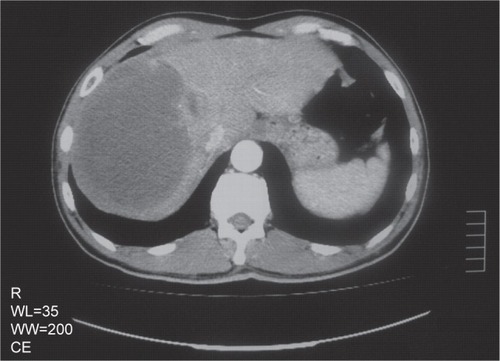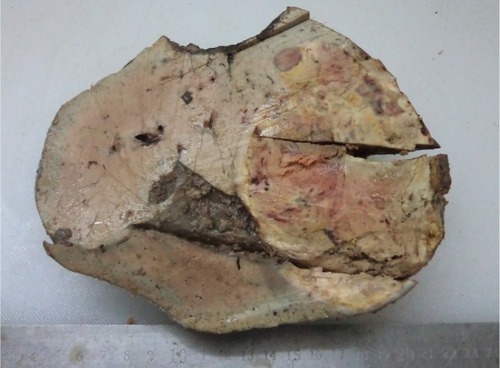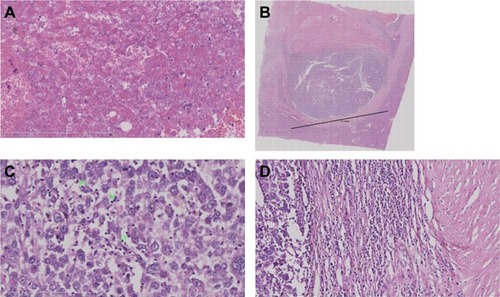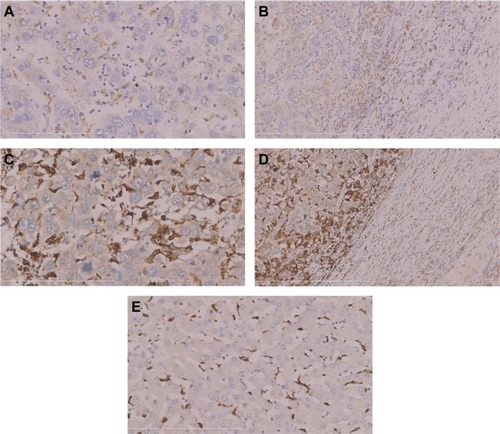Figures & data
Figure 1 CT scan of the case of HCC spontaneous regression.
Abbreviations: CT, computed tomography; HCC, hepatocellular carcinoma.

Figure 2 Macroscopical features of the case of HCC spontaneous regression.
Abbreviation: HCC, hepatocellular carcinoma.

Figure 3 Microscopical features of the case of HCC spontaneous regression.
Abbreviation: HCC, hepatocellular carcinoma.

Figure 4 Immunological features of the case of HCC spontaneous regression.
Abbreviation: HCC, hepatocellular carcinoma.

Figure 5 Immunological features of non-specific HCC as a control.
Abbreviation: HCC, hepatocellular carcinoma.

